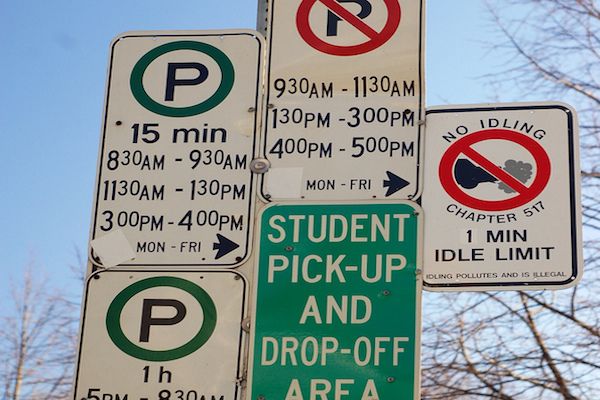Dear Parking Guru,
I’ve lived in SF for a couple of years, am inundated with work, need a car most days to make my life work, and after two years, am still overwhelmed by all of the traffic and signs telling me when, where, why, why not, and for how long I can or cannot park. I’ve gotten at least 20 parking tickets since I’ve lived here, and am totally afraid of getting a ticket now. Can you break down all of the rules down in some way?
Blinded by the Signs
Dear Blinded,
The feelings you’ve expressed in your email are not uncommon ones for people who are new to SF, nor for many of the 9 million people who live in the surrounding counties, nor for many long-time residents (although they’ll rarely admit it). The pressure of finding an unoccupied spot can be stressful in and of itself, but the pressure continues even once you’ve found one, as you then must determined if it’s a legal spot, and for how long. Many people assume that any unoccupied parking spot must be illegal to park in. “Why else would it be available? I’m no fool, I’m not going to park there and get a ticket.”
I will do my best to try to boil down San Francisco’s 105,000 restrictive signs, 36,000 4 colored restrictive meters, and 7 different types of curbs, down to a few steps.
RESTRICTIVE PARKING SIGNS: As you are cruising around, most of the signs on any given block are typically redundant. 2-Hour Limit, Street Sweeping, No Parking 3PM-7PM, etc. Read one sign on a block and you pretty much know what the other 30 signs say. So now if you make a box around a block, you just have to read four signs, not all 120 of them.
METERS: grey, green, yellow, or red.
Simplification begins by knowing what colors to look for depending on your situation.
Grey is good, and typically for 2 or 4+ hour periods.
Green is for shorter time periods.
Yellow is for commercial trucks for certain times, not just from 8AM to 6PM though as many assume. Steuart Street yellow zones are for general vehicle parking after 11AM.
Red is for 6-wheeled trucks only for certain times similar to yellow meters.
So if you have to park for an hour or more, gray and possibly yellow/red are good for you. As you circle, drive up close to one yellow meter when convenient and read the restrictive times. If you read one yellow meter on a block, then you pretty much know what the restrictions are for all of them on that block.
CURBS: grey, white, yellow, green, red, blue, and sloped.
Grey=Good.
White=Passenger Loading (but only during business hours…sometimes posted on the curb, sometimes on a sign). Church white zones can be great at night. Strip club white zones can be great spots in the early morning and afternoons.
Green=Good (for a very short period).
Yellow=Truck Loading (Sometimes. Times posted on the curb or on a sign).
Red=Bad (2 different types: No Parking and No Stopping).
Blue=Disabled (you must have a valid placard displayed or Blue=$990)
Sloped part of the curb next to a driveway= (Ticket=$100) + (Tow=$500).
100 Feet: Every restrictive sign is enforceable for 100 feet or up to the nearest cross street. 35 or so paces (about 7-8 car lengths) in front of and in back of your car should be safe.
So, Ms. Mystified, I hope this has helped to simplify the 10,000 things for you. Let’s leave it there. Of course, there are exceptions to all of the above, but this is a good simplifying strategy.
Very soon, smart parking systems will offer enhancements that will take all of the deciphering and uncertainty out of the equation. Most of this information will be automated and integrated into connected car mobile app and navigation systems. But until then, it's 20th century old school. I recommend checking out a copy of Finding the Sweet Spot at the library and reading a chapter every night.
David LaBua is the author of Finding the Sweet Spot, a leader in the sustainable urban mobility movement, and founder of VoicePark, the world’s first voice-guided mobile app guiding drivers to the closest available parking spot in real-time...for free. You can follow him on twitter@ParkingGuru.
Related Articles
